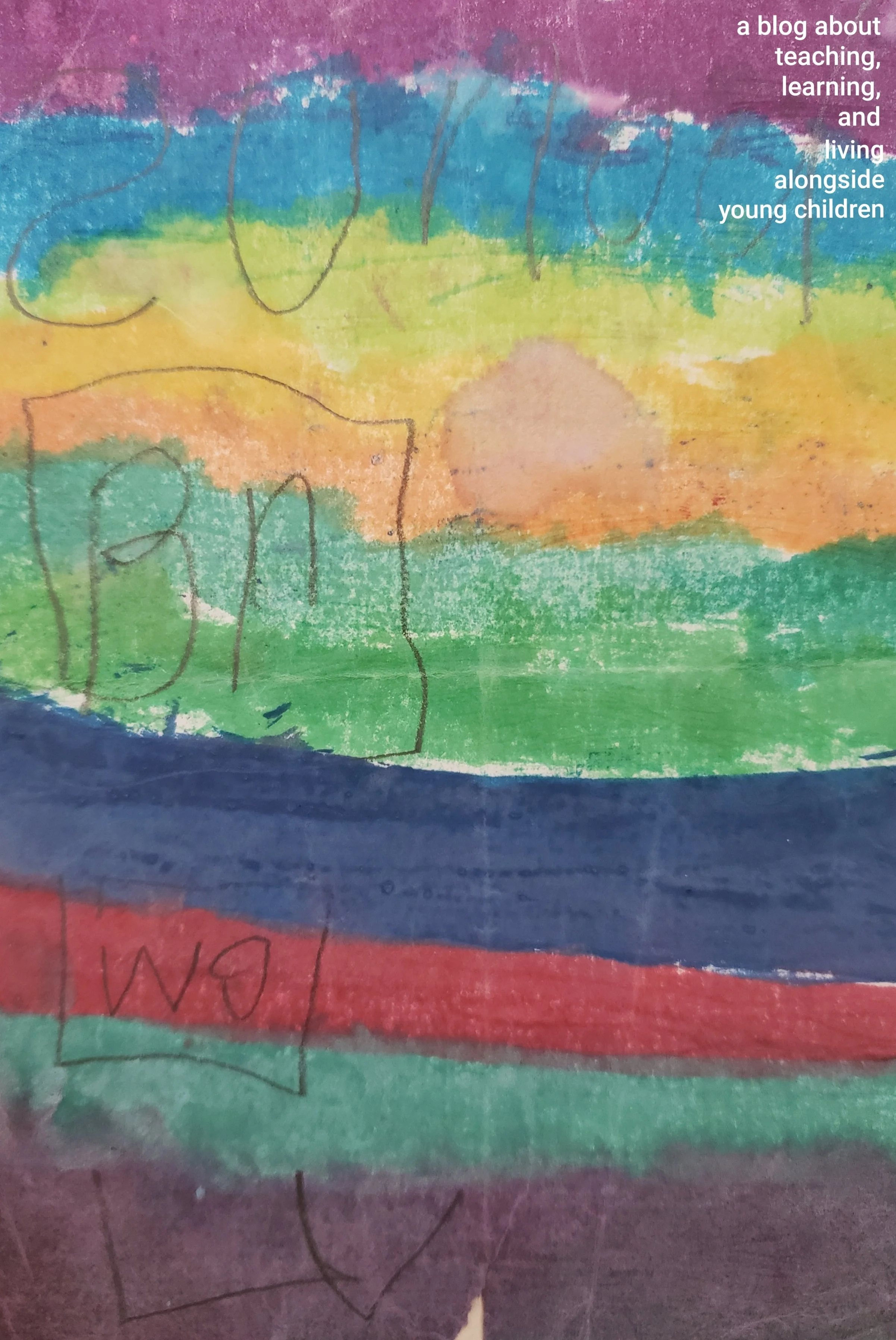Gender Bias in Early Childhood, Part 1: Raising The Issue
/Illustrated by Alexi A., age 4
I earned my bachelor’s degree in Gender Studies way back in the days before “Feminist Twitter” was a thing or Target diagnosed itself with a case of gender trouble (<----women’s studies inside joke!). I entered the field of education with a passion for activism and the conviction that I could influence students to see others as valid and varied human beings, not simple stereotypes. I was ready to rumble over the idea of “boy colors,” “girl colors,” and the rights of all children to wear any dress they want.
But as I gained more experience, it wasn’t the children I worried about anymore. I found young children to be open and accepting of interventions like, “Oh, actually colors are not about boys and girls. They are just about color.” Not such a big deal. What I found instead, as if so often the case, is that it was the adults who couldn’t shake the gender habit. Many adults, even as they lamented the rise of princess culture and signed all their girls up for soccer, still tended to say things like this:
“Hmm, there’s a lot of boy energy in this classroom…”
“Oof, three boys! You must be so tired.”
“I’m glad we have a girl, but I won’t be when she’s a teenager!”
“Well, they’re girls, so I guess it’s just time for the cliques to start.”
“You’re going to be such a ladies’ man one day, Eddy.”
Hearing things like this was a real conundrum. What I understood about current thinking in early childhood education is all about seeing children for who they are, scaffolding their individual learning, and contextualizing how families and communities make us who we are. We strive to put childhood, not adult norms for behavior and learning, at the center of our work. Most of us were not raised or educated this way but came to early childhood, particularly in progressive philosophies, for that very reason - we strive to provide the next generation with a more holistic education in the hopes they will share a spirit of thoughtful, open-minded care. Yet there is still work to be done and assumptions to upend in order for us to better serve, teach, and parent.
Important distinctions can be made about how sexism and gender bias function. Sexism is about seeing certain genders or gendered traits as inferior to another. Gender bias, however, implies that we (consciously or unconsciously) make gendered assumptions and judgments that affect our interactions with the children in our care. Few professionals or parents are likely, in 2019, to regard their children with overt sexism, but unchecked bias in the way we speak about, think about, or react to others fuels sexism overall, and the marginalization of people who don’t conform to gender stereotypes.
Internalized bias creeps into our lives with young children in subtle and small ways. We still lean into many of the same socially-coded gender norms we were raised with. As benign as the intention behind thoughts like, “Oh, you know boys just need to move” might be, the message they send is that children’s identities, behaviors, and the broad strokes of their futures are predetermined, fixed, and at a remove from the unique experience of who they really are. Plus, relying on gendered scripts also encourages us to leave certain developmental behaviors and experiences unexamined, taken for granted as the result of sex. This costs everyone the opportunity to give children the support or scaffolding they might need.
The great gift of living alongside children is to watch the world change as fast as they do and to know you helped it along. What do we really want children to learn? To tread in the undercurrent of our culture’s stereotypes? I want to give children the space to make themselves and love themselves on their own terms. To quote activist and artist Laverne Cox, “We are not what other people say we are. We are who we know ourselves to be, and we are what we love. That’s okay.”
Stay tuned for next week’s post, Gender Bias in Early Childhood, Part 2, about why gender bias in preschools persists and how we can all learn to unlearn.


